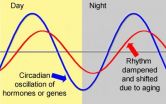(Press-News.org) ROSEMONT, Ill.─Over the past decade, a greater number of patients, age 80 and older, are having elective orthopaedic surgery. A new study appearing in the Journal of Bone and Joint Surgery (JBJS) found that these surgeries are generally safe with mortality rates decreasing for total hip (THR) and total knee (TKR) replacement and spinal fusion surgeries, and complication rates decreasing for total knee replacement and spinal fusion in patients with few or no comorbidities (other conditions or diseases).
"Based on the results of this study, I think very elderly patients, particularly those with few or no comorbidities, should strongly consider the benefits of these procedures," said lead study author Hiroyuki Yoshihara, MD, PhD, an orthopaedic surgeon at State University of New York (SUNY) Downstate Medical Center and Nassau University Medical Center.
According to 2006 U.S. Census Bureau data, Americans who are at least 85 years old represent the fastest-growing population and are expected to account for 2.3 percent of the U.S. population in 2030 and 4.3 percent in 2050. Reflecting this trend, and despite the fact that very elderly patients are at greater risk for post-surgical complications and diminished outcomes due to a greater number of comorbidities (unrelated diseases and conditions), the number of elective orthopaedic surgeries for patients age 80 and older continues to rise.
In the study, researchers analyzed data for patients age 80 and older, and those ages 65 to 79, from the Nationwide Inpatient Sample (NIS). Patient sex, race, comorbidities, complications, mortality, duration of hospital stay, whether or not patients were discharged to their home or to a rehabilitation facility, and total hospital charges were retrieved and analyzed.
Of the patients in the NIS database who were at least 80 years of age, 417,460 underwent TKR; 233,277 THR; and 70,203, spinal fusion between 2000 and 2009. In the 65 to 79 patient range, 1,868,983 underwent TKR; 768,999, THR; and, 522,369, spinal fusion.
Among the findings:
Most surgeries in the 80 and older age group involved patients ages 80 to 84: spinal fusion (79.3 percent), THR (68.9 percent) and TKR (73.9 percent).
The overall in-hospital complication rate remained stable, declining slightly from 2000 to 2009 in the 80 and older patient group for spinal fusion (from 17.5 percent to 16.1 percent) and for TKR (from 9.9 percent to 9.1 percent). The complication rate increased for THR from 9 percent to 10.3 percent.
The overall in-hospital complication rate significantly decreased in patients without a comorbidity, or with a small number of comorbidities, for spinal fusion and TKR; and remained stable in those without a comorbidity, or with a small number of comorbidities, for THR in the 80 and older patient group.
The in-hospital mortality rate in the 80 and older age group averaged .9 percent for spinal fusion, .5 percent for THR and .3 percent for TKR.
Although the overall in-hospital complication and mortality rates were significantly higher for patients age 80 and older compared to patients age 65 to 79 for all three procedures, the difference was small.
"Despite stable or increased in-hospital complications, the in-hospital mortality rate decreased over time for all three procedures," said Dr. Yoshihara. "I think this finding may reflect improvements in medical treatment for complications during the last decade.
"As life expectancy continues to increase, I hope that very elderly patients who have had inadequate results from exhaustive conservative treatment (for various orthopaedic conditions) undergo the procedures and have better life quality," said Dr. Yoshihara.
INFORMATION:
Study Details
Researchers used ICD-9-CM (International Classification of Diseases, 9th Revision, Clinical Modification) to identify patients at least 80 years of age from NIS, the largest all-payer inpatient care database, who had undergone spinal fusion, TKR or THR from 2000 to 2009. Comorbidity status was determined using the Elixhauser Comorbidity Index, a measurement tool of more than 30 medical conditions. In-hospital complications were determined based on the following ICD-9-CM codes: neurologic complications, respiratory complications, cardiac complications, gastrointestinal complications, urinary and renal complications, pulmonary embolism, and wound-related complications including infection, dehiscence, seroma and hematoma.
Orthopedic surgery generally safe for patients age 80 and older
Mortality rates decrease for hip and knee replacement and spinal surgeries
2014-07-17
ELSE PRESS RELEASES FROM THIS DATE:
Study led by indigenous people uncovers grizzly bear 'highway'
2014-07-17
A novel, First Nations-led research collaboration has revealed a previously undocumented grizzly bear aggregation in coastal British Columbia, one of the most southerly aggregations of salmon-feeding grizzlies in North America. Using non-invasive DNA analysis, the authors describe a grizzly bear "highway," identifying nearly 60 individual bears, many who travelled hundreds of miles from surrounding areas to feed on autumn-spawning salmon in the Koeye River. The research was guided by the customary law and cultural practices of the Heiltsuk First Nation and recently published ...
Lipoic acid helps restore, synchronize the 'biological clock'
2014-07-17
CORVALLIS, Ore. – Researchers have discovered a possible explanation for the surprisingly large range of biological effects that are linked to a micronutrient called lipoic acid: It appears to reset and synchronize circadian rhythms, or the "biological clock" found in most life forms.
The ability of lipoic acid to help restore a more normal circadian rhythm to aging animals could explain its apparent value in so many important biological functions, ranging from stress resistance to cardiac function, hormonal balance, muscle performance, glucose metabolism and the aging ...
How the brain stabilizes its connections in order to learn better
2014-07-17
Throughout our lives, our brains adapt to what we learn and memorise. The brain is indeed made up of complex networks of neurons and synapses that are constantly re-configured. However, in order for learning to leave a trace, connections must be stabilized. A team at the University of Geneva (UNIGE) discovered a new cellular mechanism involved in the long-term stabilization of neuron connections, in which non-neuronal cells, called astrocytes, play a role unidentified until now. These results, published in Current Biology, will lead to a better understanding of neurodegenerative ...
NASA's Aqua satellite sees birth of Tropical Depression 10W
2014-07-17
The tenth tropical depression of the Northwestern Pacific Ocean was born as NASA's Aqua satellite passed overhead.
NASA's Aqua satellite passed over Tropical Depression 10W on July 17, as it came together northwest of the island of Yap. As Aqua passed overhead the Atmospheric Infrared Sounder (AIRS) instrument aboard captured infrared data that showed powerful thunderstorms developed around the storm's center. When AIRS gathered the data on the cloud tops, the temperatures were already as cold as -63F/-52C, indicating strong uplift has pushed them to the top of the troposphere.
At ...
NASA's TRMM satellite adds up Typhoon Rammasun's Philippines deluge
2014-07-17
Typhoon Rammasun dropped large amounts of rainfall over the Philippines, and the TRMM satellite was used to measure it from space. Rammasun is now making its way toward Hainan Island, China.
NASA and the Japanese Aerospace Exploration Agency partner on the Tropical Rainfall Measuring Mission or TRMM satellite. As TRMM orbits the Earth it has the ability to calculate rainfall occurring in storms and a rainfall analysis using TRMM and other data helps scientists calculate total rainfall.
A preliminary analysis of rainfall during the period when typhoon Rammasun was moving ...
Scientists track gene activity when honey bees do and don't eat honey
2014-07-17
CHAMPAIGN, Ill. — Many beekeepers feed their honey bees sucrose or high-fructose corn syrup when times are lean inside the hive. This practice has come under scrutiny, however, in response to colony collapse disorder, the massive -- and as yet not fully explained -- annual die-off of honey bees in the U.S. and Europe. Some suspect that inadequate nutrition plays a role in honey bee declines.
In a new study, described in Scientific Reports, researchers took a broad look at changes in gene activity in response to diet in the Western honey bee (Apis mellifera), and found ...
Measuring nurture: Study shows how 'good mothering' hardwires infant brain
2014-07-17
By carefully watching nearly a hundred hours of video showing mother rats protecting, warming, and feeding their young pups, and then matching up what they saw to real-time electrical readings from the pups' brains, researchers at NYU Langone Medical Center have found that the mother's presence and social interactions — her nurturing role — directly molds the early neural activity and growth of her offsprings' brain.
Reporting in the July 21 edition of the journal Current Biology, the NYU Langone team showed that the mother's presence in the nest regulated and controlled ...
Scripps Florida scientists identify gene that plays a surprising role in combating aging
2014-07-17
JUPITER, FL, July 17, 2014 – It is something of an eternal question: Can we slow or even reverse the aging process? Even though genetic manipulations can, in fact, alter some cellular dynamics, little is known about the mechanisms of the aging process in living organisms.
Now scientists from the Florida campus of The Scripps Research Institute (TSRI) have found in animal models that a single gene plays a surprising role in aging that can be detected early on in development, a discovery that could point toward the possibility of one day using therapeutics, even some commonly ...
Crohn's disease research
2014-07-17
University of Delaware researchers have identified a protein, hiding in plain sight, that acts like a bodyguard to help protect and stabilize another key protein, that when unstable, is involved in Crohn's disease. The fundamental research points to a possible pathway for developing an effective therapy for the inflammatory bowel disease.
The research, by Catherine Leimkuhler Grimes, assistant professor of chemistry and biochemistry at UD, and Vishnu Mohanan, doctoral student in biological sciences, is published in the July 4 issue of the Journal of Biological Chemistry. ...
Carnegie Mellon combines hundreds of videos to reconstruct 3D motion without markers
2014-07-17
PITTSBURGH—Carnegie Mellon University researchers have developed techniques for combining the views of 480 video cameras mounted in a two-story geodesic dome to perform large-scale 3D motion reconstruction, including volleyball games, the swirl of air currents and even a cascade of confetti.
Though the research was performed in a specialized, heavily instrumented video laboratory, Yaser Sheikh, an assistant research professor of robotics who led the research team, said the techniques might eventually be applied to large-scale reconstructions of sporting events or performances ...
LAST 30 PRESS RELEASES:
Alexander Khalessi, MD, MBA, appointed Chief Innovation Officer
Optical chip pioneers physical-layer public-key encryption with partial coherence
How your brain understands language may be more like AI than we ever imagined
Missed signals: Virginia’s septic strategies overlook critical timing, study warns
Delayed toxicities after CAR T cell therapy for multiple myeloma are connected and potentially preventable
Scientists find cellular key to helping plants survive in saltwater
Medical cannabis program reduces opioid use
Immunotherapy works for sepsis thanks to smart patient selection
Cardiovascular events 1 year after RSV infection in adults
US medical prices and health insurance premiums, 1999-2024
Medical cannabis and opioid receipt among adults with chronic pain
Multichannel 3D-printed bioactive scaffold combined with siRNA delivery for spinal cord injury recovery
Triaptosis—an emerging paradigm in cancer therapeutics
A new paradigm in spectroscopic sensing: The revolutionary leap of SERS-optical waveguide integration and ai-enabled ultra-sensitive detection
Sweet tooth: How blood sugar migration in diabetes affects cavity development
Lowest suicide rate is in December but some in media still promote holiday-suicide myth
Record-breaking cosmic explosion challenges astronomers’ understanding of gamma-ray bursts
Excessive heat harms young children’s development, study suggests
Quanta Books to publish popular math and physics titles by Terence Tao and David Tong
Philanthropic partnerships fund next-generation instruments for mid-sized telescopes
AI offers ‘roadmap’ to plant genetics
Myosin XI-1: A key molecular target for salt-tolerant crops
Pusan National University study highlights the health hazards of ultrafine particles from small home appliances with electric heating coils and brushed DC motors
Global first: New Indigenous-led research initiative to revitalize legal orders
Transforming acoustic waves with a chip
When climate risk hits home, people listen: Study reveals key to engagement with disaster preparedness messaging
Major breakthrough against diabetes thanks to a microbial molecule that disarms inflammation
Silicon chips on the brain: Researchers announce a new generation of brain-computer interface
Getting rest is the best
Towards sustainable organic synthesis – Mechanochemistry replaces lithium with sodium in organic reactions
[Press-News.org] Orthopedic surgery generally safe for patients age 80 and olderMortality rates decrease for hip and knee replacement and spinal surgeries






